Home
»
L'Entreprise
»
Le travail de l'étain
Le travail de l'étain
Les techniques de travail de l'étain ont des racines très antiques et les premiers objets manufacturés étaient obtenus en chauffant la plaque de métal, de telle façon qu'elle puisse être forgée au marteau, en plusieurs phases. Des moules de terre, de plâtre, ou de pierre furent donc utilisés, afin d'obtenir de l'étain fondu. Ces moules furent ensuite remplacés par ceux en cuivre, en bronze, en fonte et en fer. Après le coulage, l'objet en étain était fini au tour, puis les parties d'étain fondu étaient soudées à la forme de base. Le travail de l'étain n'a pas varié de beaucoup avec le temps et, aujourd'hui encore, les techniques pour obtenir des bols, des assiettes, des couverts et de la vaisselle en tous genres sont hautement artisanales dans leurs méthodes et artistiquement expressives. La Conception et la Réalisation de chaque modèle sont personnellement réalisées par les titulaires et leurs collaborateurs.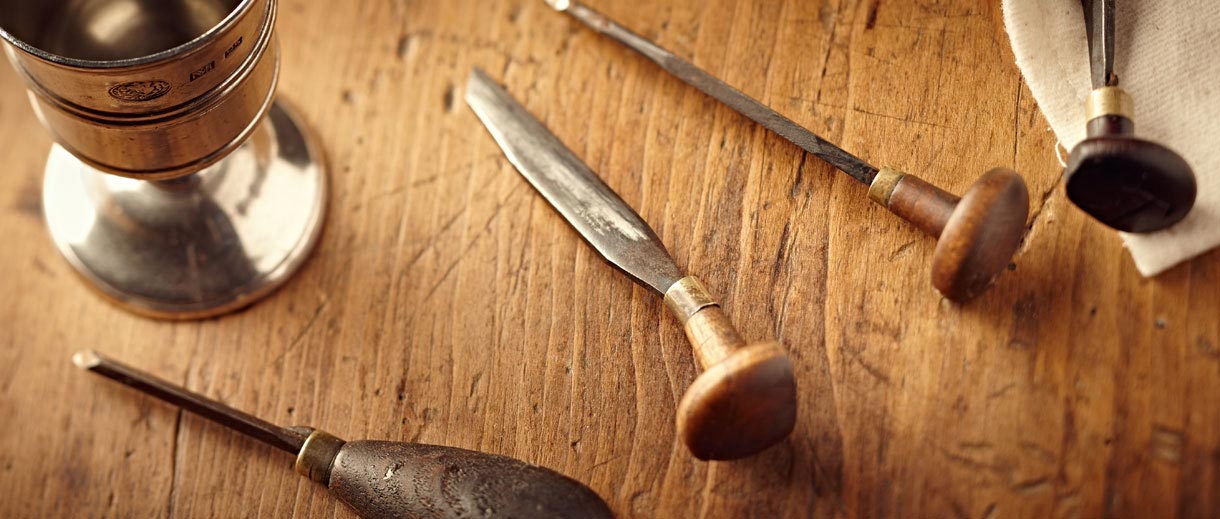
Vous pouvez observer ci-dessous quelques phases du travail de l'étain:
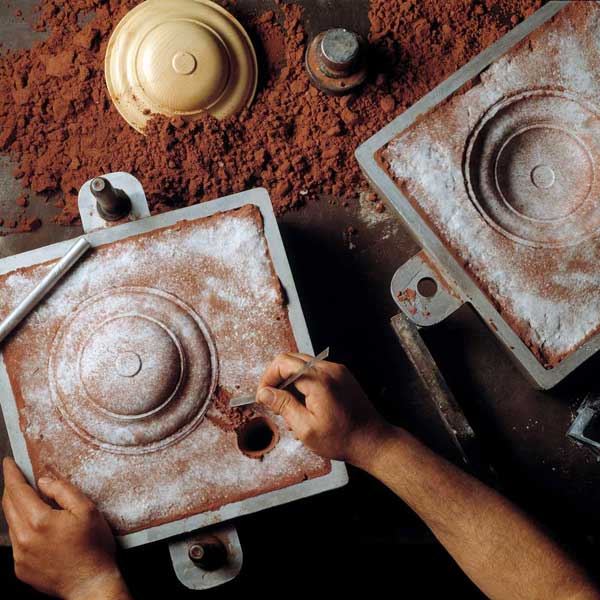 Création du prototype: The first prototype can be made of wood, wax, directly in pewter and recently also taking advantage of the rapid prototyping of 3D printers. Got the prototype is necessary to duplicate it to get the pewter model that will serve as a matrix for the creation of the molds. The matrix is usually achieved by using the technique of sand casting as shown in the photograph on the right.
Création du prototype: The first prototype can be made of wood, wax, directly in pewter and recently also taking advantage of the rapid prototyping of 3D printers. Got the prototype is necessary to duplicate it to get the pewter model that will serve as a matrix for the creation of the molds. The matrix is usually achieved by using the technique of sand casting as shown in the photograph on the right.
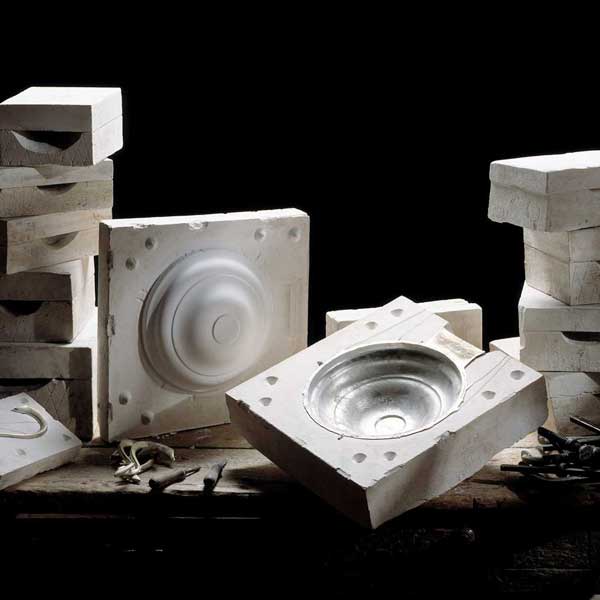 Moulds: Each pewter piece is made up of a number of different moulds; one for the main body, and others for the different components. Some pieces require as many as seven different moulds. Modern moulds are made from silicon rubber, although some of the original iron moulds are still used and sometimes, for small quantities, are also used plaster molds.
Moulds: Each pewter piece is made up of a number of different moulds; one for the main body, and others for the different components. Some pieces require as many as seven different moulds. Modern moulds are made from silicon rubber, although some of the original iron moulds are still used and sometimes, for small quantities, are also used plaster molds.
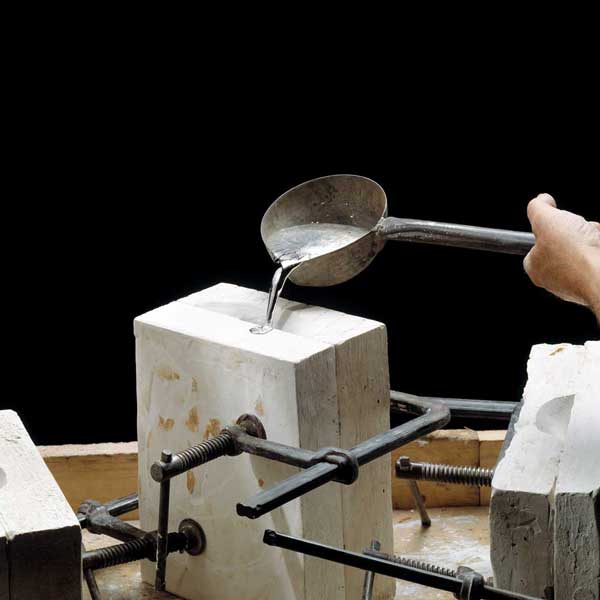 Coulage: The raw materials (tin, copper and antimony) are cut up and heated to 350° in a kiln, and very quickly a beautiful molten liquid is formed, which, using a casting ladle, is poured into mould with extreme care.
Once cooled, the pewter is gently extracted and any superflous lumps and bumps leftover from the casting process are removed.
Coulage: The raw materials (tin, copper and antimony) are cut up and heated to 350° in a kiln, and very quickly a beautiful molten liquid is formed, which, using a casting ladle, is poured into mould with extreme care.
Once cooled, the pewter is gently extracted and any superflous lumps and bumps leftover from the casting process are removed.
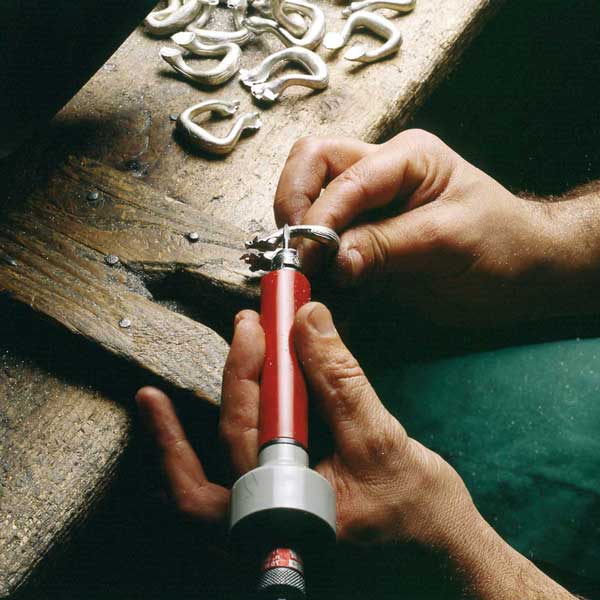 Ébarbage: At this point any decorative chiseling an engraving is undertaken, including touchmarks, to enhance the overall character of the object.
Ébarbage: At this point any decorative chiseling an engraving is undertaken, including touchmarks, to enhance the overall character of the object.
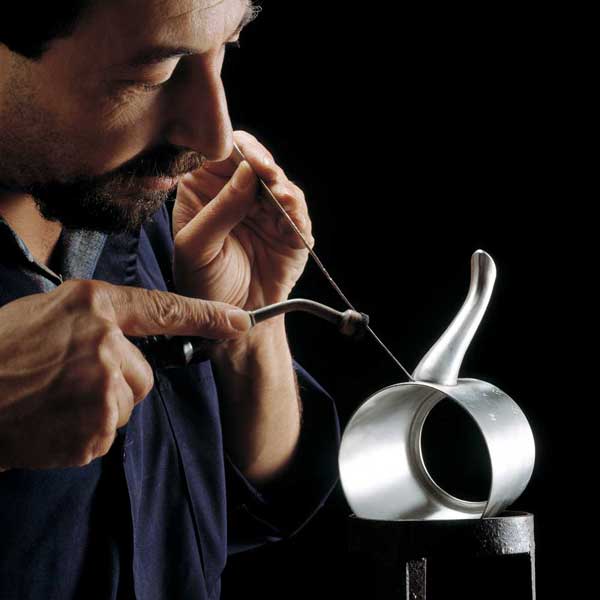 Soudage: Each piece is then assembled, welded and soldered by hand. This is an extremely skilful and technical procedure, especially with pieces designed to hold liquids.
Soudage: Each piece is then assembled, welded and soldered by hand. This is an extremely skilful and technical procedure, especially with pieces designed to hold liquids.
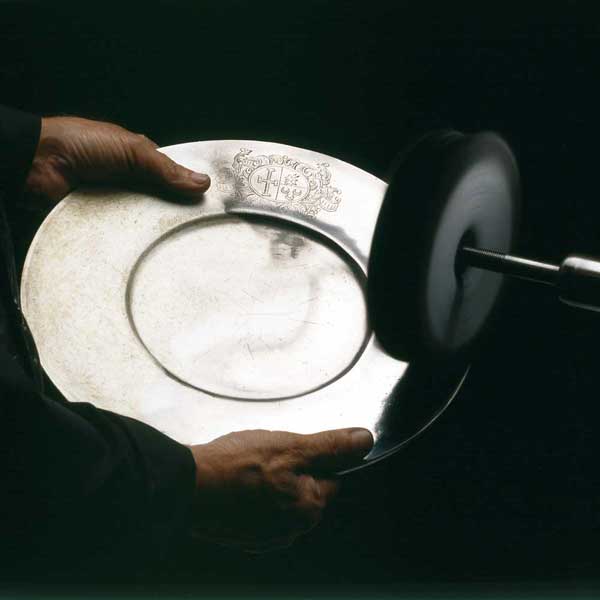 Polissage: By skilled polishing and then rubbing using increasingly fine graded wool, 'finishing' rids the surface of any roughness and imperfections, yet retains the character of the piece. The final buff is undertaken using a fine polishing cloth.
Polissage: By skilled polishing and then rubbing using increasingly fine graded wool, 'finishing' rids the surface of any roughness and imperfections, yet retains the character of the piece. The final buff is undertaken using a fine polishing cloth.